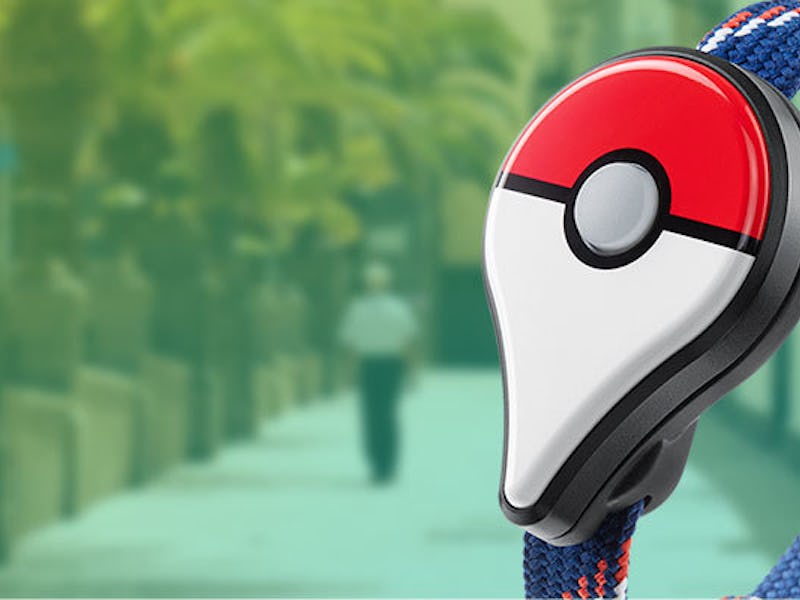Those looking to boost up their Pokémon Go catching skills are in for a disappointment. On the same Wednesday that Nintendo released its first quarter earnings report, the company took the opportunity to release some bad news: Pokémon Go Plus has been delayed until September. Originally, the wearable device was planned for an end of July launch, making the delay a rather last-minute postponing.
The accessory, which is expected to cost $34.99, will work with both iOS and Android devices over a Bluetooth connection. The strap attaches to the player’s wrist, and the device vibrates and flashes when there’s a Pokéstop near. Without getting the phone out, the player can push a button and search the location point for in-game items.
Pokémon Go Plus also helps players catch more Pokémon, as the device will flash when there’s a Pokémon nearby. The player can then push the button to throw a Pokéball, but only if it’s a creature encountered in the game before. Chances are, players won’t be using this to stock up on Vaporeons and Vileplumes.
The bands are in high demand. After initial pre-orders sold out, early birds took to eBay to auction off their pre-orders. Chris Hardwick, host of The Talking Dead, accidentally pushed the price of one listing north of $1,000, eventually selling for $1,025.
Although the band has yet to reach mass market, it could be a sure-fire winner when it releases. It solves one of Pokémon Go’s biggest issues, that it requires gamers to commit their full attention to their smartphones. The band is also sold at a price point where it could work as a popular gift for kids.
People play the Pokemon Go game at a park at Tin Shui Wai on July 26, 2016 in Hong Kong.
There are some drawbacks at first glance, though. For one, it marks people out from the crowd as Pokémon Go players, something kids may possibly see as cool but something adults probably won’t appreciate. It also doesn’t do that much, taking up valuable wrist space where a watch could go.
It’s not unreasonable to think that Nintendo could have made a companion Apple Watch or Android Wear app, achieving almost the same function in a wrist-based computer. The company probably couldn’t have charged $34.99, though, and the accessory does seem to be a way of making money off a free-to-play app. Unlike many similar games, Pokémon Go doesn’t push in-app purchases too hard, and players can easily progress without paying anything.
Considering Nintendo doesn’t actually make the software itself, whereas it will produce the hardware, it may also serve as a useful way of bringing in more revenue directly to the Mario maker.
